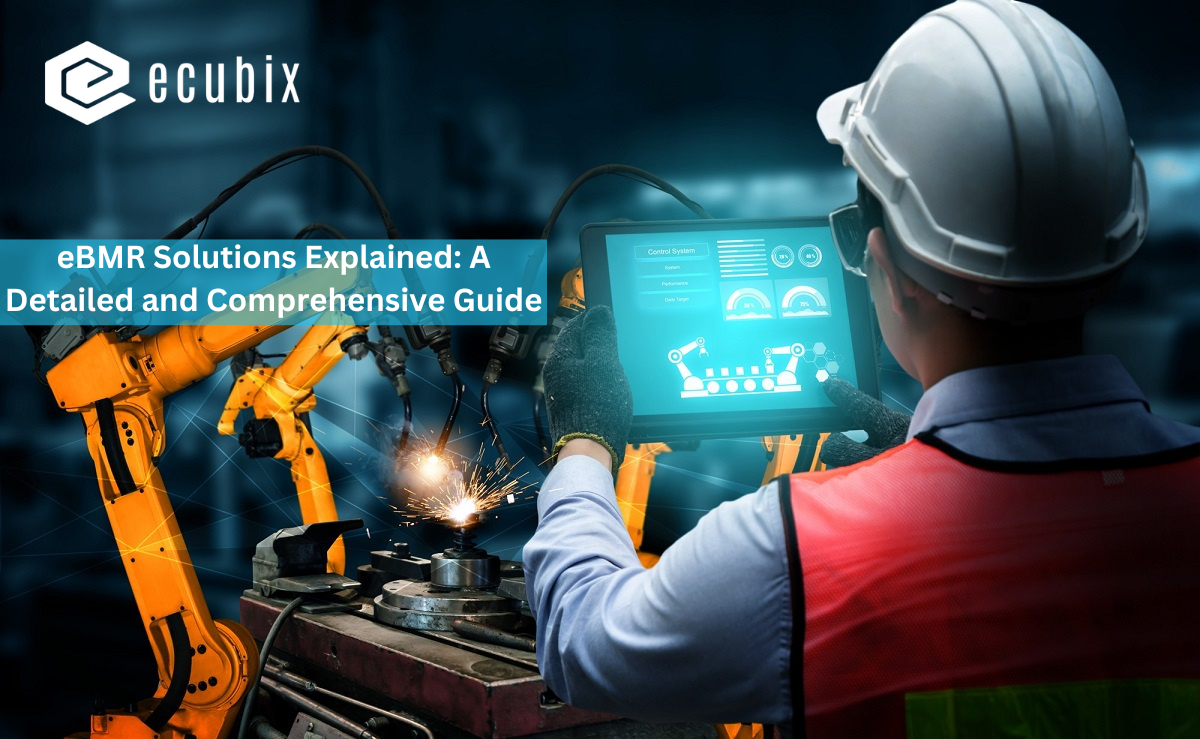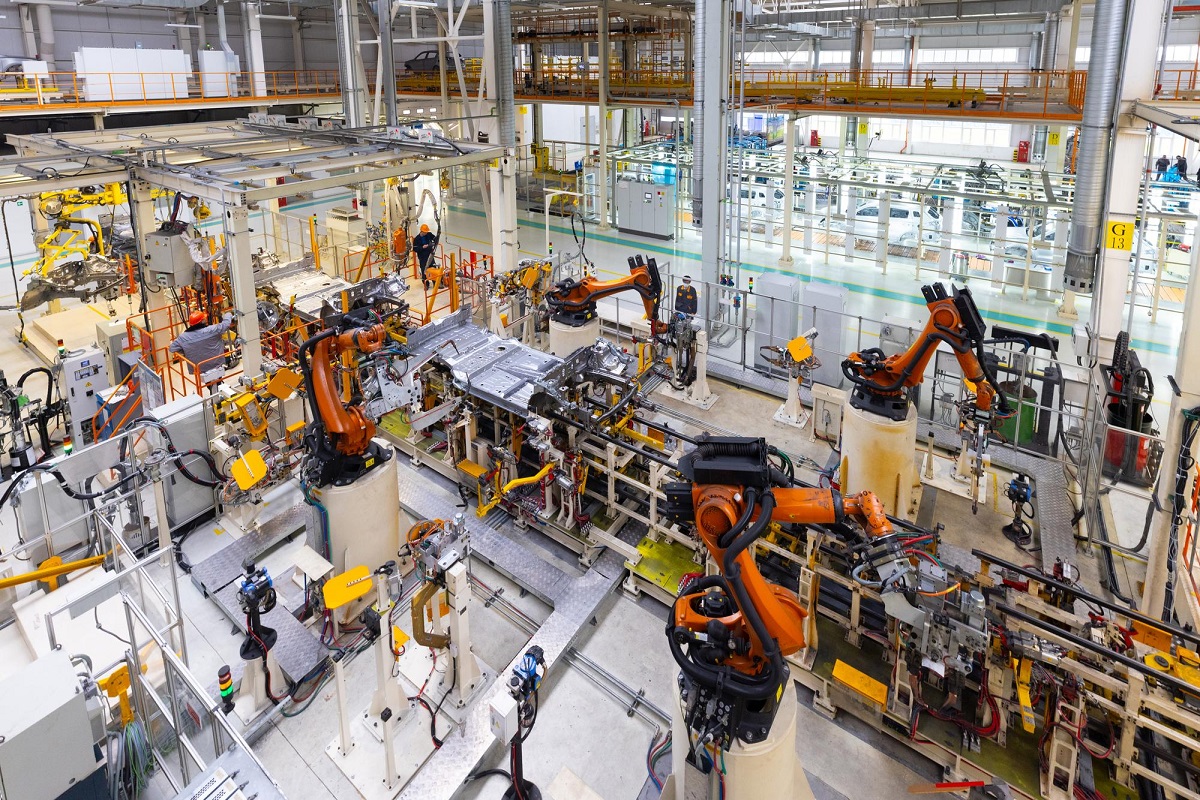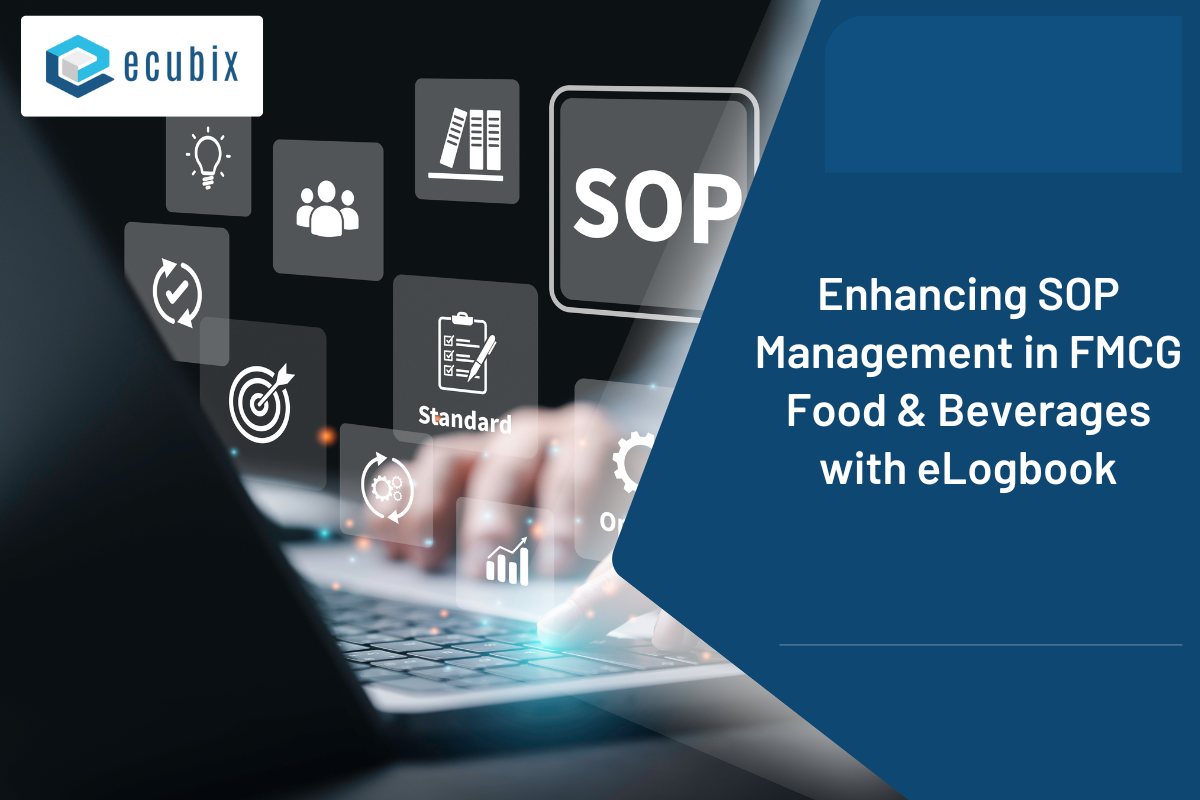
Table of Contents
Published on: November 6, 2023
Electronic Batch Manufacturing Record (EBMR) is a vital tool in the manufacturing industry that is revolutionizing the way batch records are documented and managed. An electronic batch manufacturing record is a digital version of a batch record that captures and records all the critical information and activities associated with the manufacturing process. It includes details such as ingredients, equipment, procedures, specifications, and quality control measures. The need for an electronic batch manufacturing record arises from the limitations of traditional paper-based records, which are prone to errors, time-consuming to create and manage, and difficult to track and retrieve information.
Implementing an electronic batch manufacturing record brings several key benefits for manufacturers. It improves accuracy and efficiency by minimizing human errors and automating repetitive tasks. It enhances data integrity and traceability by ensuring secure storage and easy retrieval of records. Real-time monitoring and analysis capabilities enable manufacturers to have better control over their processes and make data-driven decisions. Implementing an electronic batch manufacturing record requires careful consideration and planning.
Choosing the right software solution that aligns with the specific needs of the manufacturing process is crucial. Integration with existing systems and providing adequate user training are essential for seamless adoption. Compliance with regulatory standards is a critical aspect of electronic batch manufacturing record implementation. Manufacturers must ensure adherence to Good Manufacturing Practices (GMP) standards and meet the specific requirements set by regulatory bodies like the FDA. However, there are challenges and considerations involved in implementing an electronic batch manufacturing record. Data security and confidentiality are paramount, requiring robust cybersecurity measures to protect sensitive information.
System validation and maintenance are necessary to ensure the accuracy and reliability of the electronic records. Change management and scalability must be carefully addressed to accommodate future business growth and evolving industry 4.0 regulations. By embracing the need for electronic batch manufacturing record and addressing these considerations, manufacturers can drive operational efficiency, improve compliance, and enhance overall productivity in their manufacturing processes.
Understanding Electronic Batch Manufacturing Record
Understanding Electronic Batch Manufacturing Record (EBMR) is essential for efficient and accurate production. An EBMR is a digital document that contains detailed information about the manufacturing process of a batch of products. In order to effectively utilize EBMR, follow these steps:

- Step 1: Familiarize yourself with the purpose and benefits of EBMR.
- Step 2: Learn how to create and maintain accurate electronic records.
- Step 3: Understand how to input data and track changes in the manufacturing process.
- Step 4: Ensure compliance with regulatory requirements and industry standards.
- Step 5: Train employees on how to use and interpret EBMR effectively.
What is an Electronic Batch Manufacturing Record?
An Electronic Batch Manufacturing Record (EBMR) is a digital document that contains detailed information about the production process of a batch. It includes data on raw materials, equipment, procedures, and quality checks. EBMRs streamline production, enhance traceability, and improve compliance with regulations. Additionally, EBMRs have the amazing ability to reduce documentation errors by up to 95%.
Why is an Electronic Batch Manufacturing Record Important?
An electronic batch manufacturing record is important because it ensures accurate and efficient production processes. It provides enhanced data integrity, real-time monitoring, and analysis, leading to improved quality control. Additionally, it helps meet regulatory requirements and allows for better traceability. Therefore, an electronic batch manufacturing record is crucial for maintaining compliance and optimizing manufacturing operations.
Key Benefits of Electronic Batch Manufacturing Record
Discover the power of Electronic Batch Manufacturing Records (EBMR) and unlock a world of enhanced accuracy, efficiency, and data integrity. In this section, we’ll explore the key benefits that EBMR brings to the manufacturing process.

From improved accuracy and efficiency to enhanced data integrity and traceability, and even real-time monitoring and analysis, each sub-section will unveil the transformative capabilities of EBMR. Get ready to witness a revolution in manufacturing, where precision meets productivity in perfect harmony.
Improved Accuracy and Efficiency
Implementing an Electronic Batch Manufacturing Record (EBMR) can result in enhanced accuracy and efficiency in manufacturing processes.
- Automation: EBMR eliminates manual data entry, reducing the risk of human error and ensuring precise recording of production activities.
- Real-time tracking: With EBMR, production data is captured and updated in real-time, allowing for better visibility and control over manufacturing operations.
- Streamlined workflows: EBMR streamlines the process of creating, reviewing, and approving batch records, saving time and improving overall efficiency.
- Standardization: EBMR provides a standardized format for batch records, promoting consistency and reducing variability in manufacturing processes.
Pro-tip: When implementing an EBMR, involve all relevant stakeholders for a successful transition and continuously monitor and refine the system to ensure ongoing accuracy and efficiency.
Enhanced Data Integrity and Traceability
Enhanced data integrity and traceability are crucial aspects of electronic batch manufacturing records. They play a vital role in ensuring accuracy, compliance, and accountability throughout the manufacturing process.
- Data Integrity: E-BMRs are designed to prevent any form of data loss, tampering, or unauthorized changes, thereby preserving the integrity of manufacturing data.
- Traceability: E-BMRs offer a comprehensive audit trail, meticulously tracking each step of production. This feature facilitates investigations and guarantees product traceability.
- Compliance: Electronic records greatly enhance accessibility to historical data, making it easier to comply with regulatory requirements and audits.
Real-time Monitoring and Analysis
Real-time monitoring and analysis is a crucial aspect of electronic batch manufacturing records.
- Immediate insights: Real-time Monitoring and Analysis allows for instant feedback on production processes.
- Data-driven decisions: Real-time Monitoring and Analysis of real-time data helps identify bottlenecks and optimize efficiency.
- Quality control: Continuously monitoring and analyzing data ensures adherence to quality standards.
- Risk mitigation: Prompt identification of potential issues enables quick corrective actions.
Implementing Electronic Batch Manufacturing Record
Looking to streamline your manufacturing processes? Dive into the world of electronic batch manufacturing records in our upcoming section. Learn how implementing the right software solution can revolutionize your operations.

Discover the benefits of integrating with existing systems and the importance of user training and adoption. Get ready to optimize efficiency and accuracy in your manufacturing workflow. Let’s explore the key aspects of implementing electronic batch manufacturing records for seamless operations.
Integration with Existing Systems
Integration with Existing Systems is vital for the smooth operations of incorporating Electronic Batch Manufacturing Record (EBMR). By ensuring compatibility with existing systems, it allows for seamless data flow and eliminates the need for manual data entry, thus reducing errors and enhancing efficiency. When integrating EBMR, consider the following factors:
- Confirm that the software solution is compatible with the existing systems to guarantee compatibility.
- Ensure accurate synchronization of data between EBMR and other systems for efficient data management.
- Provide comprehensive user training to staff on how to effectively utilize the integrated system.
- Conduct thorough system testing to assure a successful integration process.
Regulatory Compliance and Electronic Batch Manufacturing Record
When it comes to regulatory compliance and electronic batch manufacturing record, two crucial aspects come into play. First, we have the need to ensure compliance with Good Manufacturing Practice (GMP) standards. Then, we’ll explore the importance of meeting the requirements set by the FDA and other regulatory bodies. By understanding these sub-sections, we can navigate the complex landscape that governs manufacturing processes, ensuring adherence to regulations and quality standards. So, let’s dive into the world of regulatory compliance and electronic batch manufacturing record.
Ensuring Compliance with GMP Standards
- Ensure compliance with GMP standards by understanding the GMP requirements for your industry.
- Develop and implement Standard Operating Procedures (SOPs) that outline GMP practices to ensure compliance.
- Train employees on the importance of GMP compliance and the specific requirements for your organization to ensure compliance.
- Regularly audit your manufacturing processes to identify any gaps or areas for improvement and ensure compliance.
- Implement corrective actions to address any non-compliance issues and ensure compliance.
To ensure compliance with GMP standards, it is crucial to establish a culture of quality and accountability within your organization. This includes fostering open communication, providing ongoing training and education, and continually evaluating and improving your processes. By prioritizing GMP compliance, you can maintain the integrity of your products and build trust with regulators and consumers alike.
Meeting FDA and Other Regulatory Requirements
Meeting FDA and other regulatory requirements is crucial when implementing electronic batch manufacturing records. Ensuring compliance with GMP standards and meeting FDA regulations are essential for quality control and product safety. Adhering to these requirements helps businesses maintain their reputation and avoid penalties or product recalls. In fact, failure to comply with FDA regulations can result in fines of up to $15,000 per violation.
When it comes to implementing electronic batch manufacturing records, meeting FDA and other regulatory requirements is of utmost importance. It is crucial for businesses to ensure compliance with GMP standards and meet FDA regulations to maintain quality control and product safety. Adhering to these requirements not only helps protect their reputation but also helps them avoid penalties or costly product recalls. It is worth noting that failure to comply with FDA regulations can lead to fines of up to $15,000 per violation.
Challenges and Considerations for Electronic Batch Manufacturing Record
Managing electronic batch manufacturing records (EBMR) comes with its own set of challenges and considerations. From ensuring data security and confidentiality to system validation and maintenance, and addressing change management and scalability, this section will provide insights into the key aspects that need to be considered. With data-backed facts and real-life examples, we’ll explore the hurdles faced in EBMR implementation and shed light on the implications these challenges have on the manufacturing industry.

Data Security and Confidentiality
Data security: Safeguard sensitive information
Confidentiality: Protect trade secrets
In today’s digital age, ensuring data security and confidentiality is of utmost importance in the implementation of electronic batch manufacturing records. Companies must incorporate measures to safeguard sensitive information and protect trade secrets from unauthorized access or disclosure. This includes implementing robust encryption protocols, access controls, and carrying out regular security audits to ensure the integrity and confidentiality of manufacturing data.
System Validation and Maintenance
System validation and maintenance are essential for the successful implementation of an electronic batch manufacturing record (EBMR) system. Here are some steps to consider in order to incorporate system validation and maintenance effectively:
- Regularly review and update the documentation related to the system’s validation and maintenance.
- Perform routine tests on the system to ensure its accuracy and functionality, thereby aligning with the principles of system validation and maintenance.
- Implement a change control process to effectively manage any updates or modifications required for the system, ensuring its continuous compliance with system validation and maintenance.
- Provide ongoing user training and support to ensure the proper usage of the system in line with system validation and maintenance.
Pro-tip: To achieve continuous improvement and meet regulatory standards, it is advisable to establish a dedicated team responsible for the system validation and maintenance process.
Change Management and Scalability
- Change management and scalability: Implement a structured approach to handle changes in the electronic batch manufacturing record system, including assessing the impact, planning and communicating changes, and providing training to users. Also, ensure that the electronic batch manufacturing record system can accommodate future growth and increasing production volume without compromising performance or data integrity.
- Integration: Consider the ability to integrate the electronic batch manufacturing record system with other software and systems used in the manufacturing process to facilitate seamless data exchange and improve overall efficiency.
- Data migration: Plan for a smooth transition from existing paper-based or manual record-keeping systems to the electronic batch manufacturing record system, ensuring proper validation and validation of historical data.
- User adoption: Provide comprehensive training and support to users to ensure their understanding and acceptance of the new electronic batch manufacturing record system, fostering a culture of compliance and continual improvement.
Frequently Asked Questions
1. What is the need for electronic batch manufacturing records (EBRs) in the life sciences industry?
EBRs are essential in the life sciences industry as they improve compliance, reduce human errors, and optimize production. They track and monitor batch production in real-time, ensuring accuracy and saving time and money.
2. How do electronic batch manufacturing records differ from batch records (BRs) and master batch records (MBRs)?
Electronic batch manufacturing records (EBRs) and batch records (BRs) are sometimes used interchangeably. However, MBRs provide detailed instructions for every step of drug manufacturing, while EBRs and BRs track and monitor batch production.
3. Why are master batch records (MBRs) important in regulated companies?
Regulated companies are required to create and maintain MBRs to ensure compliance with cGMP regulations and provide evidence of safe manufacturing during FDA audits. MBRs provide crucial details for each step of the drug manufacturing process.
4. How do electronic batch records (EBRs) improve accuracy and productivity in pharma?
EBRs in pharma track and monitor the drug manufacturing process for specific batches, reducing errors, decreasing costs, and increasing productivity. They improve visibility throughout the manufacturing cycle, ensuring every step is recorded in detail.
5. What are the key features and benefits of batch review by exception?
Batch review by exception highlights areas outside of specifications automatically, eliminating the need for manual scrutiny of records. This significantly reduces the batch review cycle time, saving time and resources. It also generates customizable exception reports for quick and efficient review.
6. How does system integration contribute to the effectiveness of electronic batch manufacturing records?
System integration allows for the seamless integration of data from EBRs with enterprise resource planning (ERP) systems or plant automation layers. This enables automatic data transfer, reducing the reliance on manual transcription and ensuring data integrity throughout the manufacturing process.



















